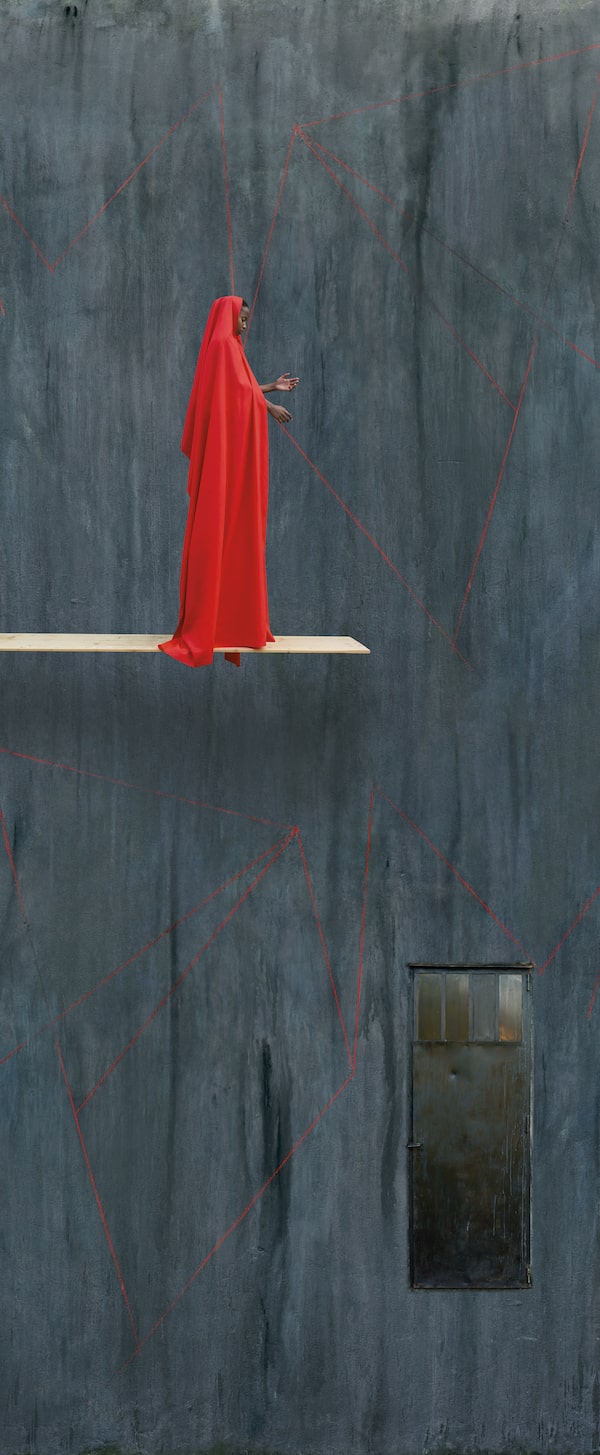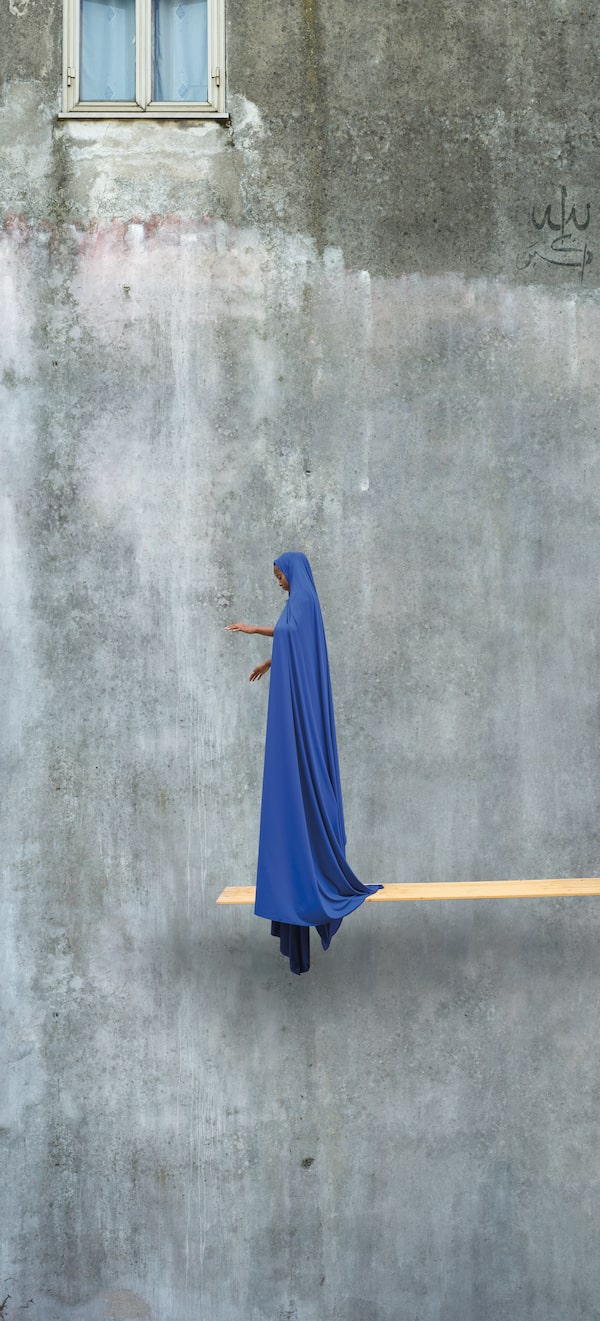
Tayeba Begum Lipi's sculptures featured at the ROM's Being and Belonging include Not For Me, a pair of stiletto heels made of razor blades.ROM
The Bangladeshi artist Tayeba Begum Lipi is represented in a new show at the Royal Ontario Museum in Toronto by two very different types of work.
Her sculptures include a pair of shoes with stiletto heels made entirely of shiny steel razor blades. Her video installation Home features an interview with Anonya, a hijra – the umbrella term in South Asia for a trans woman – describing her childhood, the centrality of her dance career to her transition and the prejudice she suffers in Dhaka.
The point of both seems clear – the shoes are entitled Not For Me – but if the glittering sculpture feels merely obvious, Home makes for seven minutes of quietly gripping viewing.
Being and Belonging, a show devoted to Lipi and 24 other female artists from the Islamic world and its diaspora, is animated by a quest for visual metaphors.
How best to represent or discuss in art the oppression, the prejudice and the displacement felt by women who live in fiercely patriarchal societies or in exile from them? Few of the results are subtle, but many are startling.
Fahmida Suleman, ROM’s Islamic World curator, has divided the show into three themes – space, movement and power – and placed each of the artists in a category, but there is actually a lot of overlap. Taking up space, both personal and geographic, is a way of asserting power, and movement through immigration changes it, for better or worse. Themes of place, identity and gender run throughout.
The Montreal artist Anahita Norouzi, a native of Iran, creates one of the most unexpected metaphors in the show by combining the botanical and the political.
Anahita Norouzi combines the political with the botanical in her video installation Policies of Belonging.Image courtesy the artist
Her five-channel video installation Policies of Belonging features oversized images of five iris plants, arranged from darkest to lightest, each one slowly opening its flower for the patient viewer (through manipulated time-lapse photography.) The white iris will take about 16 minutes to bloom, the purples about 25 to 30 and the black one a full 38.
Each second of those minutes stands for a day. The differences represent the length of time it takes for the United States to process new immigrants according to a 2015 government survey: The darker the skin, the longer it takes. (So, for an applicant from central Africa, it takes a full 2,280 days.)

Sengalese-Italian photographer Maïmouna Guerresi provides another arresting moment with Red Trampoline, seen here, and Blue Trampoline, below.

courtesy of Mariane Ibrahim
Norouzi choses the iris because it too is an immigrant, a plant imported from Asia.
The Sengalese-Italian photographer Maïmouna Guerresi provides another arresting moment with a pair of large photographs, Red Trampoline and Blue Trampoline. In each a Black woman is posed on a diving board suspended over a vast vertical drop like an elevator shaft. The women are veiled in long draperies – scarlet in one instance; royal blue in the other – that leave only the face and hands showing and contrast sharply with the grey of their industrial backdrops.
They stand gracefully over the space, their hands extended as though contemplating without anxiety how to maintain balance or navigate the void. Perhaps they are angels or mystics, but their figures can also be read as dramatic personifications of the superhuman negotiation required by many women to cross barriers imposed by their race and gender.
Not all the work is this visually emphatic. Using white ink on black paper, the Pakistani-Canadian artist Tazeen Qayyum has created a large disc, a mandala of sorts, by the simple but time-consuming process of repeatedly inscribing the Urdu words for right and wrong (sahih and ghalat) in a series of tightly spaced concentric circles.
The script is so finely detailed that, from a distance, the circle looks like a piece of weaving and the work, suggesting an ethical meditation, is quietly beautiful.
Similarly, Ascend, a video animation by the Iranian-American artist Shiva Ahmadi, is almost hallucinogenic as watery images waft by of monkeys playing with water bubbles by a pond, but gradually the bubbles give way to bombs and hand grenades.
The piece is so engrossingly surreal, the viewer may miss its most pointed reference: It includes a version of the infamous photo of a migrant boy’s body washed up on a Turkish beach.
Lubaina Himid's Bittersweet. Himid's work is brightly coloured, simply painted yet tantalizing elusive.
Lubaina Himid, the British artist who became the first Black woman to win the Turner Prize in 2017, is something of an outlier here.
Ms. Himid's Sometimes you don’t know what you’re getting until it’s too late.Image courtesy the artist
Her large acrylic paintings suggest personal and social narratives of the African diaspora without ever insisting on identity. Bittersweet shows a Black couple in front of their fruit stall reacting to some disturbance off stage: the woman with a basket on her head restrains her male companion from interfering.
In Sometimes you don’t know what you’re getting until it’s too late, a woman stands in a kitchen holding a small bird. In the background a mother and child stand at a window waving goodbye. We don’t see who is leaving but the well-dressed woman in the foreground looks as though she might need to decide whether, like the bird, she too will fly.
Brightly coloured, simply painted yet tantalizing elusive, these paintings convey untold stories or unseen hurts. They are testament to an idiosyncratic iconography that is simultaneously bold and subtle.
Being and Belonging: Contemporary Women Artists from the Islamic World and Beyond continues at the Royal Ontario Museum to Nov. 19.